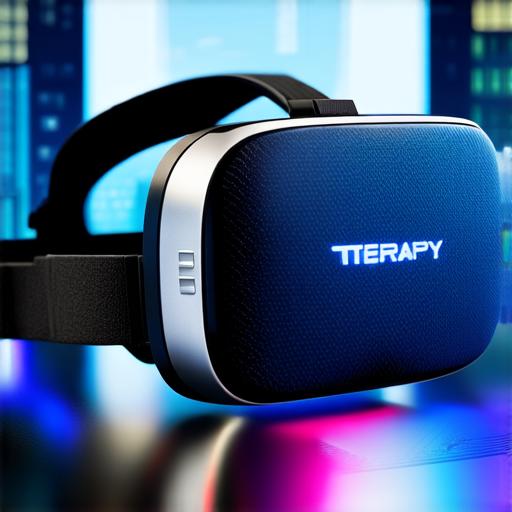Virtual reality (VR) therapy is a rapidly growing field that combines cutting-edge technology with evidence-based mental health treatments. By creating immersive, interactive experiences, VR therapy can help individuals overcome a wide range of mental health conditions, from anxiety and depression to
PTSD
and chronic pain. In this article, we will explore the many applications of VR therapy, its benefits, and how it compares to traditional therapy methods.
Virtual Reality Therapy Applications
Anxiety and Depression
One of the most well-documented applications of VR therapy is in treating anxiety and depression. Research has shown that VR exposure therapy can be as effective as cognitive behavioral therapy (CBT) in reducing symptoms of these conditions. For example, a study published in the Journal of Clinical Psychiatry found that VR exposure therapy was significantly more effective than traditional exposure therapy for treating social anxiety disorder.
Virtual reality can also be used to treat depression by exposing individuals to situations that trigger negative emotions and help them learn how to manage those emotions in a safe and controlled environment. This type of therapy is known as emotional processing therapy (EPT).
PTSD
Post-traumatic stress disorder (PTSD) is a debilitating mental health condition that affects many individuals, including soldiers, first responders, and victims of trauma. VR therapy has been shown to be an effective treatment for
PTSD
by exposing individuals to traumatic situations in a controlled environment. This exposure can help individuals process their emotions and learn coping strategies to manage their symptoms.
Virtual reality can also be used to treat other types of trauma, including childhood abuse and natural disasters. For example, a study published in the Journal of Trauma & Dissociation found that VR exposure therapy was effective in reducing symptoms of
PTSD
in victims of natural disasters.

Chronic Pain
Chronic pain is a common condition that affects millions of individuals worldwide. Virtual reality therapy has been shown to be an effective treatment for chronic pain by distracting the mind from pain and providing a sense of control over one’s environment. This type of therapy is known as virtual reality exposure therapy (VRET).
Virtual reality can also be used to treat other types of chronic conditions, including fibromyalgia and multiple sclerosis. For example, a study published in the Journal of Medical Internet Research found that VR exposure therapy was effective in reducing pain and improving function in individuals with fibromyalgia.
Substance Abuse
Substance abuse is a serious mental health condition that affects millions of individuals worldwide. Virtual reality therapy has been shown to be an effective treatment for substance abuse by providing individuals with a safe and controlled environment to learn coping strategies and manage their cravings. This type of therapy is known as virtual reality exposure therapy (VRET).
Virtual reality can also be used to treat other types of addictions, including gambling and internet addiction. For example, a study published in the Journal of Addiction found that VR exposure therapy was effective in reducing symptoms of problematic internet use.
Benefits of Virtual Reality Therapy
Immersive and Interactive
One of the key benefits of virtual reality therapy is its immersive and interactive nature. Virtual reality can create a safe and controlled environment that allows individuals to confront their fears and challenges in a way that traditional therapy cannot. This immersion can help individuals learn coping strategies and manage their symptoms more effectively.
Customizable
Virtual reality therapy can be customized to meet the specific needs of each individual. This customization can include the type of environment, the type of stimuli, and the duration of the exposure. This personalization can help individuals receive the most effective treatment for their specific condition.
Cost-Effective
Virtual reality therapy can be a cost-effective treatment option compared to traditional therapy methods. Virtual reality technology is becoming more accessible and affordable, making it an attractive option for individuals who may not have access to traditional therapy methods. Additionally, virtual reality therapy can be completed in a shorter amount of time than traditional therapy, which can reduce overall costs.
Safe and Controlled Environment
Virtual reality therapy provides a safe and controlled environment that allows individuals to confront their fears and challenges without the risk of harm or danger. This safety can help individuals feel more comfortable and confident as they learn coping strategies and manage their symptoms.
Comparing Virtual Reality Therapy to Traditional Therapy Methods
Cognitive Behavioral Therapy (CBT)
Virtual reality therapy has been shown to be as effective as cognitive behavioral therapy (CBT) in treating anxiety and depression. However, virtual reality therapy provides a more immersive and interactive experience that can help individuals learn coping strategies more effectively. Additionally, virtual reality therapy can be customized to meet the specific needs of each individual, making it more personalized than traditional CBT methods.
Exposure Therapy
Virtual reality exposure therapy has been shown to be an effective treatment for
PTSD
and other types of trauma. However, traditional exposure therapy can be more challenging and uncomfortable for individuals, as they may be exposed to real-life situations that trigger their symptoms. Virtual reality exposure therapy provides a safe and controlled environment that allows individuals to confront their fears and challenges in a way that traditional exposure therapy cannot.
Medication
Medication can be an effective treatment option for many mental health conditions. However, medication alone may not address the underlying emotional and psychological factors that contribute to an individual’s symptoms. Virtual reality therapy can provide a more holistic approach to treating mental health conditions by addressing both the emotional and psychological factors that contribute to an individual’s symptoms.
FAQs
What types of virtual reality therapy are available?
There are many different types of virtual reality therapy available, including anxiety and depression treatment,
PTSD
treatment, chronic pain treatment, substance abuse treatment, and more. The specific type of VR therapy that is best suited to an individual’s needs will depend on their specific condition and the goals of their treatment.
Is virtual reality therapy covered by insurance?
Virtual reality therapy may be covered by insurance depending on the individual’s specific insurance plan and the severity of their mental health condition. However, it is important to check with your insurance provider to determine whether VR therapy is covered under your plan.
How long does virtual reality therapy typically take?
The length of VR therapy will depend on the specific condition being treated and the goals of the individual’s treatment. Some individuals may require only a few sessions of VR therapy, while others may require multiple sessions over a longer period of time.
Is virtual reality therapy safe?
Virtual reality therapy is generally considered safe when conducted by trained professionals in a controlled environment. However, it is important to follow all safety guidelines and protocols during VR therapy to minimize the risk of injury or harm.
Summary
Virtual reality therapy is a rapidly growing field that combines cutting-edge technology with evidence-based mental health treatments. By creating immersive, interactive experiences, VR therapy can help individuals overcome a wide range of mental health conditions, from anxiety and depression to
PTSD
and chronic pain. With its immersive and interactive nature, virtual reality therapy provides a safe and controlled environment that allows individuals to confront their fears and challenges more effectively. As technology continues to advance, virtual reality therapy is likely to become an increasingly important tool in the treatment of mental health conditions.
